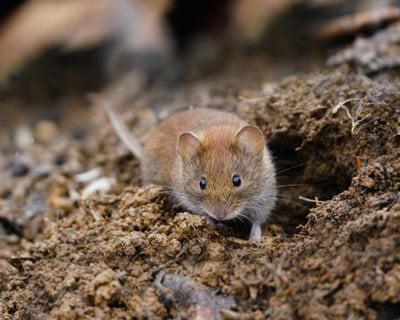Reliable Vole Control Solutions: Handling Vole Pest Issues
Reliable Vole Control Solutions: Handling Vole Pest Issues
Blog Article
Comprehensive Guide to Reliable Vole Pest Control: Problem Recognition and Treatment Approaches
In the world of efficient pest control, vole invasions pose a special obstacle that requires a calculated approach. By checking out the nuances of vole habits, recognizing vital indicators of invasion, and assessing a variety of control alternatives, one can establish a thorough technique to deal with these elusive parasites.
Understanding Vole Habits
Vole habits is characterized by their burrowing behaviors and fast recreation rates, making them a challenging pest to control properly. These tiny rats normally produce complex passage systems underground, using them for shelter, food storage, and transportation. Voles are herbivores, taking in a range of plants, bulbs, turfs, and roots, which can create considerable damages to yards, orchards, and lawns. Their rapid reproductive price more complicates control efforts, with women efficient in producing several litters in a single year, each consisting of numerous spawn.
Comprehending vole behavior is vital for effective pest control techniques. By determining their burrow areas, keeping an eye on feeding locations, and carrying out targeted control methods, such as capturing or environment adjustment, vole infestations can be taken care of successfully.
Signs of Vole Problem

Avoidance Techniques
Applying effective avoidance strategies is critical in minimizing vole infestations and securing plants from their devastating feeding behaviors (vole yard damage). To stop vole problems, it is important to start by removing possible food resources and sanctuary. Keep lawn and plants trimmed short, get rid of weeds and debris, and preserve a neat yard or yard to make the area less attractive to voles. Installing obstacles such as equipment towel or underground fencing can likewise assist discourage voles from getting in certain locations. Additionally, decreasing excess wetness by fixing leaky pipes and guaranteeing correct water try this out drainage can make the atmosphere less congenial for voles.
Regularly checking the property for signs of vole activity, such as paths and tunnel openings, is crucial for very early discovery and punctual activity. If vole task is presumed, consider making use of traps or repellents purposefully put near their pathways.
Non-Lethal Control Methods
To efficiently manage vole populations while prioritizing gentle approaches, non-lethal control techniques provide sensible remedies for lowering vole damage in landscapes and yards. One reliable technique is the use of physical obstacles such as hardware fabric or wire mesh to protect at risk plants. These obstacles can be hidden at the very least 12 inches deep and curved at a 90-degree angle to avoid voles from burrowing beneath. Furthermore, environment adjustment can discourage voles by reducing their preferred food sources and concealing spots. Maintaining a well-mowed lawn, removing particles, and keeping plant life trimmed can make the atmosphere less attractive to voles.

Lethal Control Options
One efficient approach for addressing vole infestations in landscapes and yards includes the calculated use of lethal control options. When encountered with an extreme vole invasion that non-lethal methods have actually failed to have, implementing dangerous control steps comes to be essential. On the whole, when using deadly control alternatives, it is crucial to do so sensibly and in accordance with regional regulations to properly handle vole invasions.
Conclusion
In verdict, efficient vole bug control requires a thorough understanding of vole habits, identification of indications of infestation, implementation of avoidance techniques, and use of both dangerous and non-lethal control methods. By integrating these techniques, people can efficiently take care of vole populations and shield their home from damage. It is vital to resolve vole invasions without delay to avoid more problems and lessen the impact on the surrounding environment.
Given the elaborate tunnel systems and quick recreation rates particular of voles, acknowledging the signs of vole problem becomes vital in reliable pest control. One of the primary indications of vole presence visit their website is the existence of surface area runways or routes in grass or snow, usually about 1-2 inches vast, developed as voles travel in between their burrows and food resources.To properly take care of vole populations while prioritizing humane methods, non-lethal control strategies offer practical services for lowering vole damages in landscapes and yards.One effective approach for resolving vole problems in landscapes and gardens includes the tactical use of lethal control choices. vole control.In conclusion, reliable vole pest control requires a thorough understanding of vole habits, identification of signs of problem, application of avoidance approaches, and utilization of both non-lethal and lethal control methods
Report this page